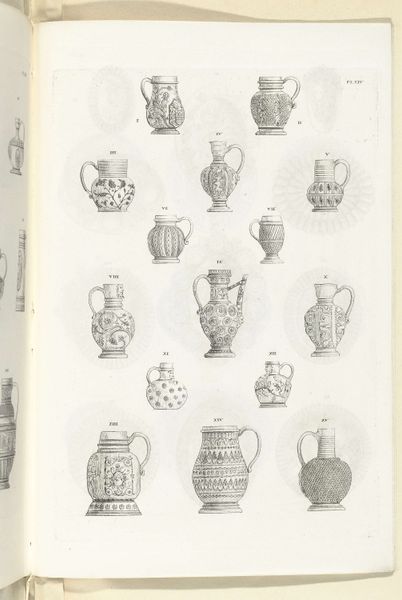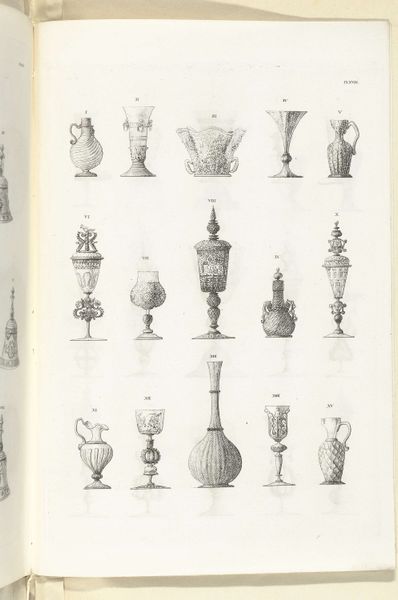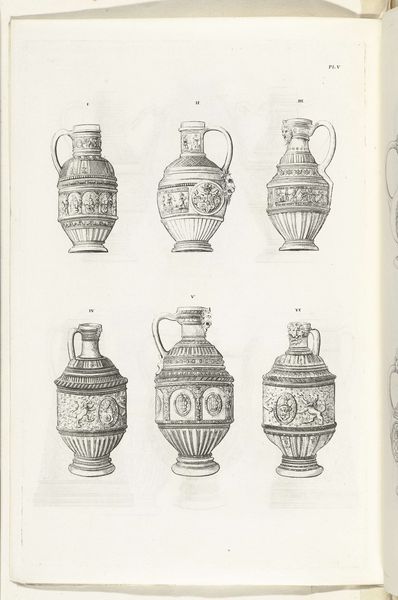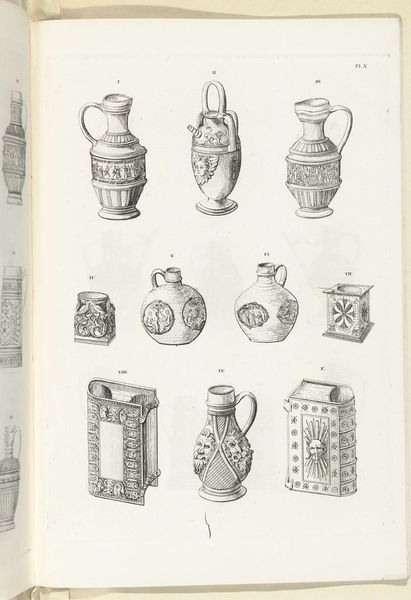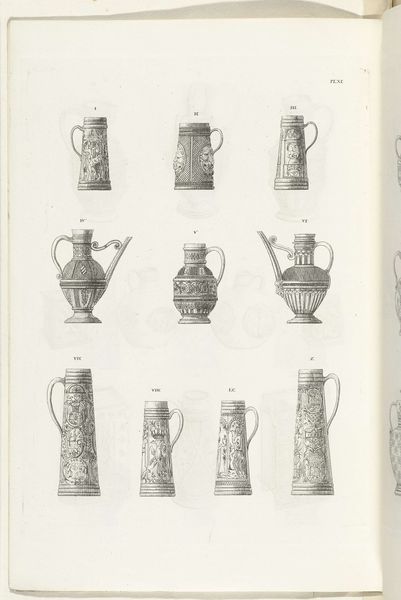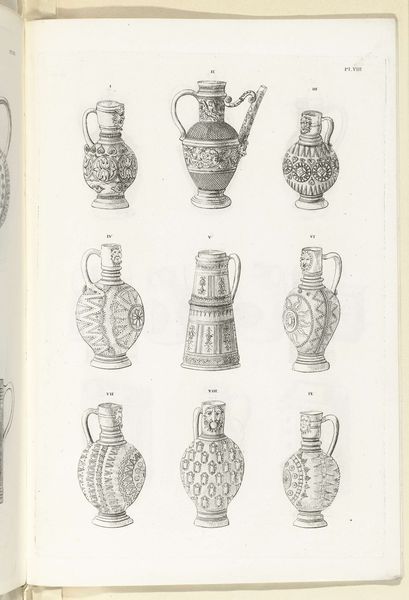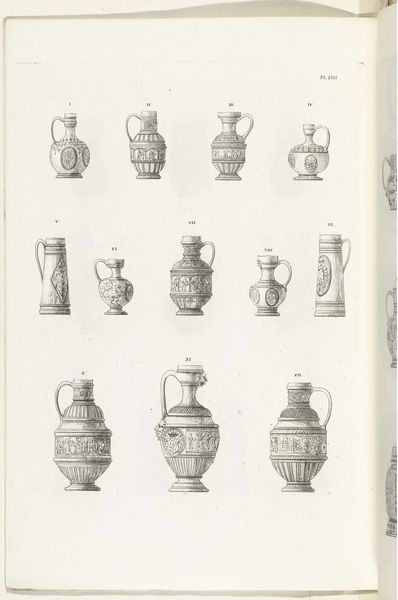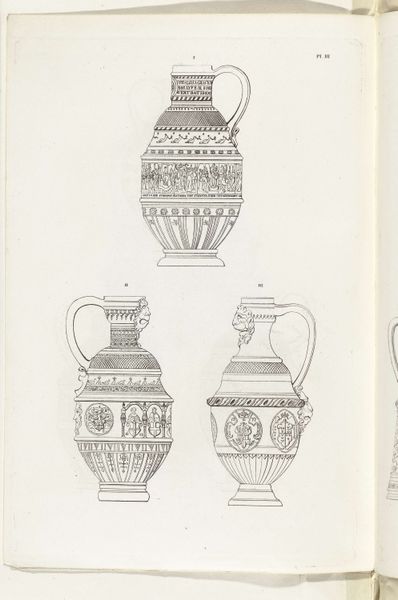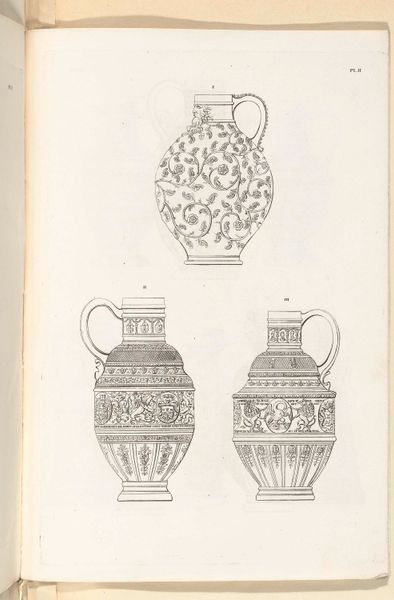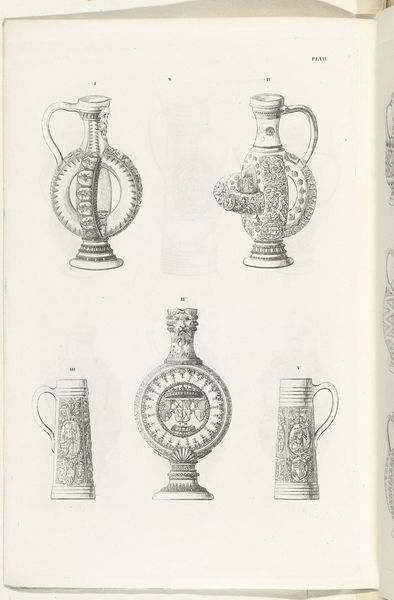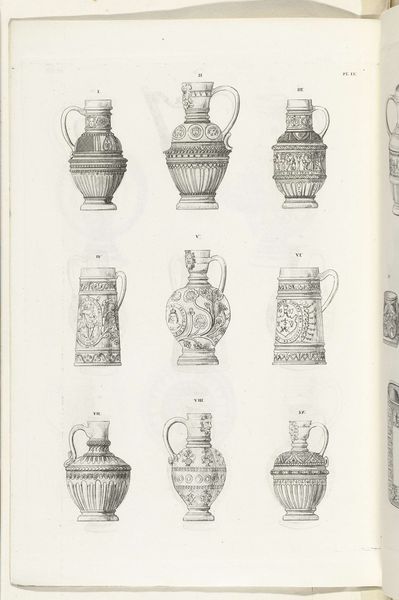
drawing, ceramic, ink
#
drawing
#
ceramic
#
ink
#
geometric
Dimensions: height 250 mm, width 160 mm
Copyright: Rijks Museum: Open Domain
Curator: Looking at this plate, the drawing feels almost clinically precise. The rendering captures these jugs—Kannen van steengoed, plate VI as Charles Onghena titled it—with such crisp detail that they become archetypes of the form. What is your first impression of them? Editor: Utilitarian beauty, rendered with meticulous precision, comes to mind. They possess a stoic presence despite being inanimate. What's immediately striking is the almost obsessive level of detail given to capturing the form and texture of each jug. I'm intrigued by this convergence of functionality and decoration, the contrast of smooth, undecorated space with these ornamental details, which are themselves neatly ordered, structured, symmetrical. Curator: The precision feels like a record—like Onghena is keen to preserve this craft and visual lexicon. What’s powerful about this drawing, created sometime between 1827 and 1829, is that each jug becomes an encapsulation of cultural memory through repeated visual symbols, though they're quite classical in origin. Take Jug 1, for example; its decorative scheme shows figures borrowed straight out of Greco-Roman artistic traditions. Editor: Yes, while those allusions suggest a classical heritage, there’s also a rigid formality, a sense of applied design rather than fluid invention. It’s like seeing ancient motifs flattened onto a modern surface, filtered through some early form of industrial process or standardization. This interplay creates visual harmony, where pattern meets volume. Curator: Do you feel any particular mood radiating from the work? Despite being monochromatic, the level of detail projects such clarity that I get a surprisingly vivid sensation. Editor: Clarity is spot on, and the restricted palette makes them seem quite severe. But also, I think their compositional uniformity invites us to delve into the nature of repetition itself. Here, repetition implies precision, but also maybe the monotony of labor, industrial design… Curator: It is amazing how simple visual echoes carry the weight of our culture. I'm particularly moved by the silent witness in Onghena's plate, as though those very jugs possess an internal history of domesticity. Editor: Absolutely. Though at first appearing somewhat mundane, examining "Kannen van steengoed, plaat VI” with more attentive eyes allows for profound contemplation on heritage, technique, form, and cultural narrative—the sum of our experiences—and ultimately prompts new ways of appreciating objects we engage with.
Comments
No comments
Be the first to comment and join the conversation on the ultimate creative platform.
